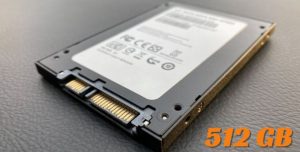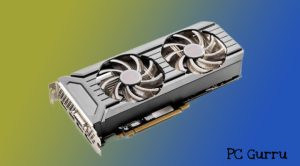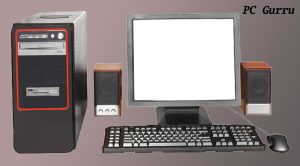Buying the incorrect type of memory for your laptop or desktop could cause it to run slowly. Usually, everyone makes mistakes while purchasing RAM for their laptop or desktop I think you are also wondering what the difference between laptop RAM and desktop RAM i-e Laptop RAM vs. Desktop RAM. You’re not alone! This is one of the most frequently asked questions that computer specialists receive from their clients, so we’ve put together this guide to answer that question and a few others. So don’t hesitate and just follow us and in the end, you will be capable that which RAM is suitable for your system
Desktop RAM
Compared to laptops, desktop PCs demand a lot more RAM. Desktop computers typically include numerous hard drives, additional peripherals like graphics cards and sound cards, and massive internal memory banks used to run the operating system. All of these components require memory access.
Laptop RAM
It is more common for laptops to have less RAM. Due to their lower processing power, laptops sometimes have weaker internal parts. Manufacturers address this by adding as much RAM as they can afford to the machine.
Key Differentiators – Laptop RAM vs Desktop RAM
RAM is Random Access Memory, right? There are quite a few key differences between laptop and desktop RAM that you should be aware of when shopping for your next computer.
Size – Laptop RAM vS Desktop RAM
Since desktop memory banks are often bigger than those used on laptops, larger memory can be loaded at once. This implies that running numerous programs at once won’t significantly affect the PC’s functionality. In comparison to desktop computers, laptops have a smaller form factor. A computer can accommodate rams with 240 pins or 204 pins, respectively. The number is the quantity of pins connecting your motherboard’s RAM slot to the memory. The majority of laptop motherboards include 240-pin slots. Typically, desktop motherboards have 204-pin or 240-pin slots.
Capacity – Laptop RAM vS Desktop RAM
In general, desktop memory can store more data at once than laptop memory. When working with huge files or handling a lot of photographs and videos, this is helpful.
Slots – Laptop RAM vS Desktop RAM
To provide a significantly greater memory capacity, desktop PCs can have multiple memory banks installed independently. Laptop memory typically occupies a single bank or “slot” due to the limited capacity of laptop hardware to accommodate additional RAM banks.
BIOS Setup – Laptop RAM vS Desktop RAM
Compatibility and BIOS difficulties are considerably more likely to occur when adding RAM to a desktop computer. The BIOS must be able to recognize and interact with all installed memory modules because desktop computers may support much greater quantities of memory. The machine won’t correctly boot up if you attempt to integrate conflicting modules.
Compatibility between modules is an additional problem. When working with larger amounts of RAM, it is always advisable to stick with the same brand of memory, however, newer BIOSes should be able to detect any issues. It can also benefit to install identical memory in each bank, as some manufacturers advise, as this can also assist prevent issues. Memory on laptops functions a little differently.
Since the RAM bank is substantially smaller, there are fewer compatibility problems to take into account. Because laptop modules don’t have to consume as much memory at once, they are also less prone to BIOS issues. The risk of incompatibility with power requirements is the only real one. The memory won’t work properly if you try to add a laptop module that needs greater voltage than the device can manage.
Voltages – Laptop RAM vS Desktop RAM
Standard desktop RAM typically needs voltages between 1.5V and 2.5V. This enables the use of a considerably wider variety of various brands and models in a single system.
Laptop memory modules often require lower voltage, typically ranging from 1.2V to 1.65V. This enables many manufacturers to be involved with laptop memory production. Laptop modules often have a smaller physical size than desktop RAM due to the lower voltage needed.
Compatibility – Laptop RAM vS Desktop RAM
Rarely is desktop RAM totally compatible with a laptop. The biggest problem is that desktop computers are capable of supporting much more memory, so you need to be aware of what the BIOS’ maximum overall memory capacity is. Due to BIOS limitations, if you try to install too much RAM, the computer will not boot up properly. Additionally, laptop modules need less voltage to operate, which means desktop machines won’t function or will be harmed.
Utility – Laptop RAM vS Desktop RAM
The same functionality is offered by RAM modules for laptops and desktop computers, enabling the fastest possible operation of a computer.
RAM is essentially just a place where your data can be stored momentarily before being sent somewhere to be processed. Your system will have more storage capacity and use disc space less frequently if the RAM is increased.
Price – Laptop RAM vS Desktop RA
Both RAM for laptops and RAM for desktops are widely available. There are various kinds, each with a varied speed and capacity. Ram’s pricing varies according on its type and capacity just like different components have varied price ranges.
Although laptops have machinery with a small screen and a compact design that costs less than a desktop, RAM prices for them will be different from those for desktops. Despite desktop RAM often having larger capacities, it is less expensive than laptop RAM.
Technical Details- Laptop RAM vS Desktop RAM
Because desktop modules may be built larger and hence retain and transport more data per module, they often have lesser bandwidth than their laptop equivalents. Additionally, they can take longer to retrieve and process big blocks of data because of their increased latency.
The most important characteristic to be taken into consideration for memory in desktop and laptop computers is capacity. The fact that modules have varying types, speeds, and latencies, which affect overall performance, means that this does not fully convey the situation.
Types of RAM – Laptop RAM vs Desktop RAM
As long as you buy the type of memory that is compatible with your system, you can typically plug it in and upgrade without much problem. Different varieties of RAM operate slightly differently. The two most popular memory kinds are DDR3 and DDR4.
DDR3
“Double Data Rate Type 3 RAM” is the official name of DDR3 RAM. It is a vital SDRAM version used for system memory. DD3R RAM, which is available in both SO-DIMM and DIMM form factors, has consistently dominated the systems hardware market for more than a decade. Computers with DDR3 memory are able to transport data from one area to another at a substantially faster rate than those using DDR2 RAM.
DDR4
The statement “Double data rate fourth-generation synchronous dynamic random-access memory” is referred to as DDR4 SDRAM. For the upcoming age of computing, DDR4 RAM offers the most recent memory configurations. DDR4 is able to offer users maximum efficiency and faster speed at all times thanks to its lower voltage and better transfer rates.
Key Differentiators between DDR3 RAM and DDR4 RAM
Data Rate
While DDR4 SDRAM can transport data at a greater rate of 2133MHz, DDR3 SDRAM can only do so at 800MHz (or MHz) (2,133Mhz). Applications like video games will load much more speedily with DDR4 than they do with DDR3 when you compare their loading times side by side.
Cost
Cost-wise, DDR4 is more expensive than DDR3.
Voltage
1.50 V is the voltage required by DDR3 RAM. At 1.20 V, DDR3 RAM is operational.
Usability
For the repair and detection of even the slightest faults, DDR3 RAM contains ECC memory, which consists of additional data byte lanes. On various consumer platforms, such as smartphones, tablets, desktop computers, etc., DDR4 RAM offers computing capabilities.
Pin-to-Pin Distance
A 240-pin interface is present on DDR3 RAM. To determine why 44 additional pins were added to the new RAM is challenging given that the pin-to-pin spacing has decreased from 1.00 mm in DDR3 RAM to 0.85 mm in DDR4 RAM. Indicated by DDR4 RAM is a 288-pin interface. The DDR4 RAM’s overall bandwidth capacity can be increased with the use of these extra pins.
Origin and Nature
DDR3 RAM first appeared in 2007. It is a dynamic random-access memory that is synchronous (SDRAM).Various forms of DDR3 RAM offer a high bandwidth interface. DDR4 RAM, introduced in 2014, surpasses DDR3 RAM with several advantages. With its cutting-edge technology, it supports gadgets of the newest generation. DDR4 enables the expansion of consumer hardware with powerful processors.
FAQs
How Much RAM Do I Need?
How much RAM you need depends on what you want to do with your computer. If you’re just browsing and checking social media, 4GB should be plenty. If you enjoy video editing, music production, or other demanding tasks, however, 8GB will help prevent stuttering and missed frames. Keep in mind that there are two types of RAM—desktop, and laptop—and they aren’t interchangeable. You can’t use desktop RAM in a laptop, nor vice versa. Most computers come with an amount of RAM pre-installed by their manufacturer; if it isn’t enough for your needs, you’ll have to upgrade it yourself.
Things to Consider When Buying New Computer RAM
Before you run out and buy new RAM for your computer, there are a few things to consider. First, make sure that your computer supports whatever type of RAM you want to buy—for example, if you have an old desktop running Windows XP on it and you want to install DDR3 memory, your motherboard may not support it. Second, take into account what kind of RAM you already have installed on your computer.
If you’re buying RAM as an upgrade from existing RAM, make sure that it’s compatible with what’s already inside. For example, don’t try to install DDR4 memory in a system with only DDR2 slots available—it won’t work! Finally, think about how much RAM you need in order to be productive; more is always better when it comes to computers (and most other things), but don’t waste money by buying too much just because it’s cheap right now!
Can I Upgrade My Current Computer Memory (RAM)?
If you have a desktop computer, then yes, you can upgrade your memory. Your memory slots will be located on either your motherboard or inside your tower case. Laptops are a different story, however. Laptops pose a greater challenge for upgrades because manufacturers often make components non-removable. Additionally, they solder laptop RAM to the motherboard, making upgrades riskier without proper expertise. With that said, most new models do allow RAM upgrades via SO-DIMM modules that fit into one of your laptop’s RAM slots. However, since there is no standardization between manufacturers when it comes to RAM for laptops, make sure you check with your laptop manufacturer before buying new memory modules!
Although it’s important to understand some of these basics about RAM for both desktops and laptops alike, most consumers really only need to know two things about their computers’ RAM: how much they have installed currently and how much they need. And even though we’ve answered these questions at length in our detailed guides above, we thought we would give some quick answers here as well. For example, how do I figure out how much RAM I need?
Where Can I Buy Computer Memory?
Buying memory for your computer can be as simple as pulling out your credit card and purchasing a bundle of RAM chips right from Amazon. However, there are other considerations to take into account before you do so. First, keep in mind that desktop computers have different RAM requirements than laptops. Additionally, there’s a significant difference between SDRAM memory and DDR SDRAM memory, especially in terms of performance and bandwidth. For these reasons (and more), you should take care to buy high-quality computer memory from a reputable seller—as opposed to whatever’s cheapest on Amazon at any given moment.
Why is it Cheaper Online to Buy Computer Memory or RAM than in Stores?
The prices for laptop RAM and desktop RAM can vary widely depending on where you’re buying. If you want to save money, it’s easiest to buy online; sometimes you can get a bigger RAM upgrade for less online than in stores. Plus, laptops are more prone to faulty memory than desktops, so sometimes it’s worth paying a little extra for better-quality components from a reputable brand. But why is computer memory cheaper online? After all, that seems backward—why would retailers charge more in stores and then discount their products later at home?
There are two reasons, but they both have to do with the overhead costs of brick-and-mortar businesses compared with online retailers. In short, your local store has higher costs associated with keeping its doors open. In order to make up for those higher costs, they charge more when customers walk through their doors. Online retailers don’t need to incur these expenses and therefore offer lower prices overall. That said, if you’re willing to pay a premium price (sometimes as much as 50 percent or more), some local stores will match or beat online pricing on RAM upgrades too!
How to Install New Computer Memory?
You want to know how to install new computer memory, but don’t want to take apart your laptop (or desktop). Worry not! It’s just as easy as popping in a replacement chip—you may need a screwdriver and pliers—but it doesn’t have to be difficult. There are two major differences between laptop RAM and desktop RAM. First, laptops use what is called low profile or slim memory while desktops use standard memory modules. Second, some laptops require that you remove more screws than others before you can replace them (because of their smaller size). However, if you follow these few steps, you should have no problem getting new computer memory up and running again in no time.
Conclusion
In order to hold more data, desktop memory features larger memory banks than laptops. Due to their larger storage capacities, desktop computers are better suited for processing huge files. To analyze vast amounts of information quickly, they also need greater memory speeds. Laptop memory costs less and relies on fewer expensive components, making it a better choice for casual users who don’t require substantial power. Hi! I’m delighted you asked, and it’s even better that you’re contemplating buying a computer with DDR4 memory for gaming and graphic design use whenever feasible, instead of opting for one with DDR3 memory – or not. The short answer here is yes. If you live in North America, Europe or Asia then yes, definitely buy a computer with DDR4 memory in it instead of one with DDr3 memory.
If you reside elsewhere (like Australia), don’t buy a computer with DDR4 memory. Manufacturers haven’t released them there yet. However, they will become available soon. It’s wise to wait for their release before buying. Additionally, ensure you acquire at least two video editing software programs. Different programs perform optimally on various hardware and operating systems. Anyway, good luck finding out which video editing software program(s) works best on your new computer’s hardware!







